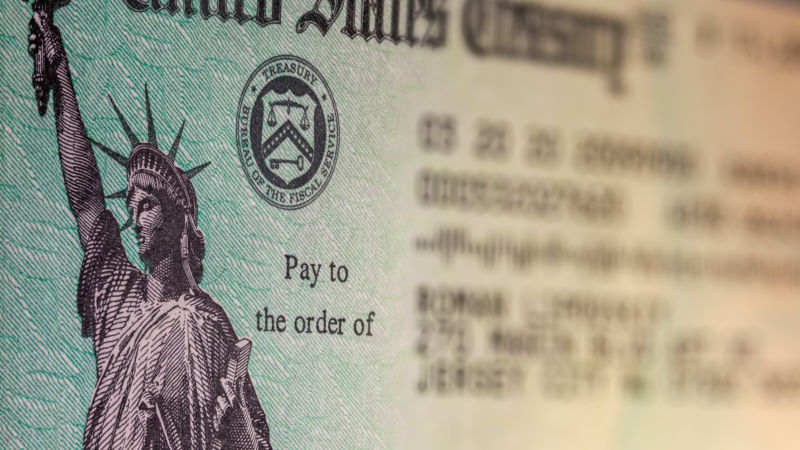In June 2020, an independent government watchdog reported that the federal government mistakenly sent nearly 1.4 billion dollars to deceased individuals. With so many other financial programs still being implemented, it’s important to prevent similar situations in the future. So how did the federal government accidentally send out so much money, and what can we learn to prevent wasteful payments in the future?
No time to waste
As the outbreak of COVID-19 began in the U.S., millions of Americans lost their jobs and sought financial aid, putting incredible strain on states’ unemployment insurance systems. On March 27, Congress passed the CARES Act, which, among other things, gave certain taxpayers a one-time payment of $1200, and another $500 for every dependent child.
Because this economic stimulus was vital for so many people, the dedicated members of the U.S. Treasury Department and the I.R.S. worked overtime to get payments out as quickly as possible. Thanks to their hard work, the first round of payments was sent via direct deposit in just two weeks, with physical checks going out soon after. As a purely technical feat, the speed that these agencies were able to work was remarkable, but that achievement came at a cost.
The report from the Government Accountability Office found that the agencies had mistakenly sent payments to 1.1 million deceased individuals. These erroneous payments totaled nearly $1.4 billion in congressionally dedicated funds. With more stimulus options being debated and a highly charged election on the horizon, the need to mitigate the risk of wasteful payments became a top priority for agency leaders looking to restore the public’s trust.
Old processes saved time, but not money
It is only natural to wonder how such an error could have happened. The report from the Government Accountability Office found two primary contributors to this situation. First, the CARES Act required that the IRS and Treasury Department deliver the stimulus payments “as rapidly as possible.” To avoid any delay, they relied on procedures that had already been developed for stimulus payments in 2008, which did not filter payments through the death records provided by the Social Security Administration. Second, the GAO discovered that while the IRS had access to SSA death records, the Treasury Department did not. This separation of important public records databases meant that the Treasury had no way to double check the information that they were given.
Where is the stimulus money now?
Despite how much misdirected money was sent, only a portion of that was actually received by the families of the deceased. The earliest stimulus payments were sent to those who had submitted their 2019 tax returns and set up direct deposits to receive them in their accounts. This means that some of the money was directly deposited into the accounts of the deceased that were shared by a significant other without any nefarious intent. The second wave of payments were physically mailed to the addresses of the deceased, but cannot be deposited by their families because they do not have access to the same accounts. This keeps that money from being withdrawn fraudulently from the federal reserves. A small amount of stimulus checks have simply been lost or were never collected, which means they too are still in the reserves.
What is the government doing about the lost money?
The IRS has set up a web page with an online portal and mailing information for the honest taxpayers to return the payments they received in error. But without investing in better fraud investigation solutions, this will most likely only get a small amount of the total back. Leaders at the IRS and Treasury Department would have to take resources away from other critical tasks, and they still need everyone on hand to prevent more mistakes in the future. While $1.4 billion is a lot of money to the average taxpayer, in the eyes of the federal government, this amount is only a very small fraction of the trillions of dollars that are dispersed and managed successfully every day. To further investigate and recover lost funds, government agencies need to invest in modern, technological solutions that can help them do more with the resources that they already have.
A CLEAR path forward
The loss of $1.4 billion in stimulus money is certainly a shocking example of accidental financial waste, but it highlights the need to implement waste prevention solutions around Federal aid programs like the CARES Act. During these challenging times, a solution like Thomson Reuters CLEAR could be integral to restoring the public’s faith in our financial institutions without slowing down the dispersal of critical funds. CLEAR would help prevent further issues by collecting data from multiple public records databases that are not always connected. By putting everything into one tool, agency users won’t have to make a choice between working quickly and ensuring accuracy. They can handle future public records challenges efficiently, for the good of every taxpayer.
Learn more about how Thomson Reuters CLEAR can help prevent financial fraud, waste, and abuse, or get a free demonstration here.
*Disclaimer
Thomson Reuters is not a consumer reporting agency and none of its services or the data contained therein constitute a ‘consumer report’ as such term is defined in the Federal Fair Credit Reporting Act (FCRA), 15 U.S.C. sec. 1681 et seq. The data provided to you may not be used as a factor in consumer debt collection decisioning, establishing a consumer’s eligibility for credit, insurance, employment, government benefits, or housing, or for any other purpose authorized under the FCRA. By accessing one of our services, you agree not to use the service or data for any purpose authorized under the FCRA or in relation to taking an adverse action relating to a consumer application.










